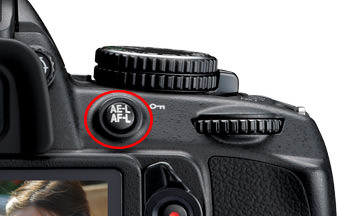لا أعبث مطلقًا بأي من إعدادات "القياس/التعرض"، لذا أوصي فقط بتركها على القيم الافتراضية. أود أيضًا تخطي القسم الفرعي "Timers/AE lock" بالكامل.
ضمن "التصوير/العرض"، أول شيء أفعله دائمًا هو إيقاف تشغيل صوت تأكيد التركيز. غالبًا ما أستعيد التركيز عدة مرات وأكره إزعاج أي شخص بأصوات التنبيه الصادرة من الكاميرا.
الإعداد الكبير الذي أعتمد عليه غالبًا عند تصوير المناظر الطبيعية هو "وضع تأخير التعريض الضوئي". تعد هذه الميزة جوهرة في أحدث كاميرات Nikon DSLR، لأنها ترفع أولاً مرآة الكاميرا (التي تولد الكثير من الاهتزازات)، ثم تنتظر فترة زمنية محددة وبعد ذلك فقط تفتح الغالق لالتقاط الصورة. والشيء الجميل هو أنه يمكنك تحديد ما يصل إلى 3 ثوان من التأخير، والتي يمكن أن تقضي تماما على "صفعة المرآة" المخيفة. عندما أقوم بإجراء ورش عمل حول تصوير المناظر الطبيعية، غالبًا ما أتجول حول المشاركين وأتحقق من كيفية تشغيل كاميراتهم. أولئك الذين ليس لديهم أجهزة تحكم عن بعد للكاميرا (إصدار كابل عن بعد) يشعرون في البداية بالإحباط، ولكن بمجرد اكتشافهم لهذه الميزة الرائعة، فإنهم لا يندمون على عدم إحضار مشغلات عن بعد بعد الآن. أفضل جزء في هذه الميزة بالذات هو أنه يمكنك استخدامها فعليًا مع مؤقت الكاميرا! إذا قمت بضبط القرص الثانوي الموجود أعلى الكاميرا على Timer، ثم قمت بتعيين "تأخير المؤقت الذاتي" على ما يقرب من 5 ثوانٍ، فيمكنك التخلص تمامًا من اهتزاز الكاميرا. بشكل أساسي، المؤقت الأولي الذي يبلغ 5 ثوانٍ هو أن تستقر الكاميرا بعد الضغط على زر الغالق. بعد الانتظار لمدة 5 ثوانٍ، يتم تشغيل ميزة "وضع تأخير التعريض الضوئي" ويتم رفع المرآة. تنتظر الكاميرا 3 ثوانٍ إضافية قبل أن يفتح الغالق أخيرًا ويتم التقاط الصورة. هذه ميزة رائعة أوصي بشدة باستخدامها عند تصوير المناظر الطبيعية والهندسة المعمارية في ظروف الإضاءة المنخفضة / سرعات الغالق البطيئة جدًا.
I never mess with any of the “Metering/exposure” settings, so I would just recommend to leave them at default values. I would also skip the whole “Timers/AE lock” sub-section.
Under “Shooting/display”, the first thing I always do is turn off the focus confirmation beep. I often re-acquire focus many times and I would hate to annoy anyone with the beeps coming from my camera.
The big setting that I often rely on when photographing landscapes is “Exposure delay mode”. This feature is a gem on the latest Nikon DSLRs, because it first lifts the camera mirror (which generates a lot of vibrations), then waits a specified amount of time and only then opens up the shutter to capture the image. The nice thing is, you can specify up to 3 seconds of delay, which can completely eliminate the dreaded “mirror slap”. When I conduct my landscape photography workshops, I often walk around the participants and check how they trigger their cameras. Those, that do not have camera remotes (remote cable release) initially feel frustrated, but once they discover this neat feature, they don’t regret that they did not bring remote triggers anymore. The best part about this particular feature, is that you can actually use it in conjunction with the camera timer! If you set the secondary dial on the top of the camera to Timer, then set the “Self-timer delay” to something like 5 seconds, you can completely eliminate camera shake. Basically, the initial 5-second timer is for the camera to settle after you press the shutter release. After it waits for 5 seconds, the “Exposure delay mode” feature kicks in and the mirror is raised. The camera waits 3 more seconds before the shutter finally opens up and the image is captured. This is a great feature that I highly recommend to use when photographing landscapes and architecture in low light conditions / very slow shutter speeds.



تعليق